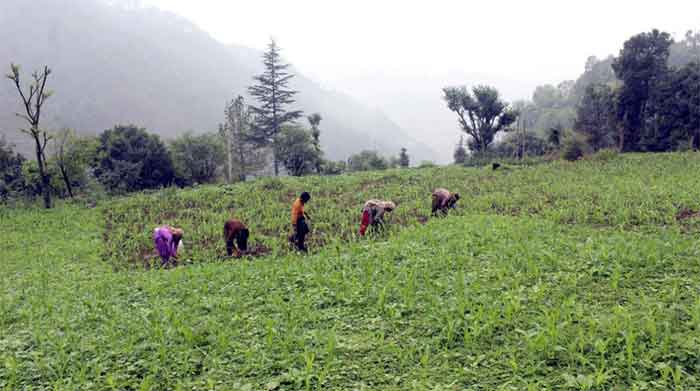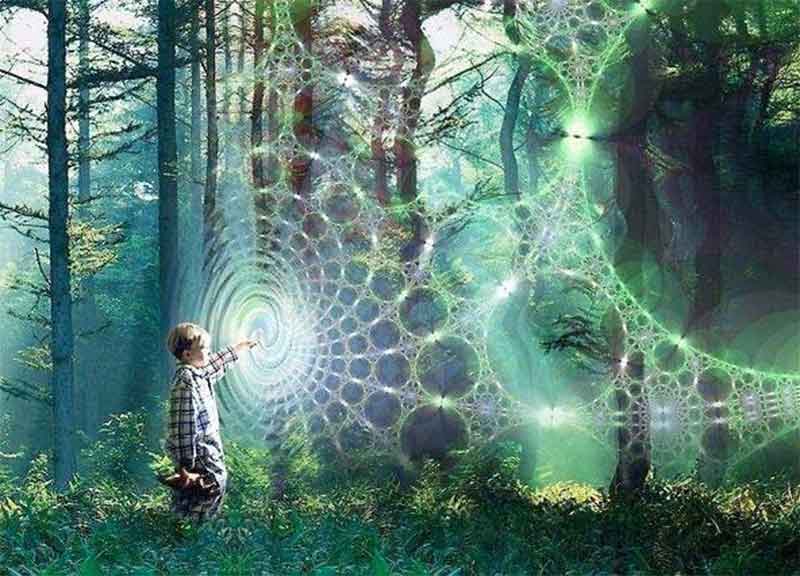
Even for the smallest ailment, people, these days, resort to medicine. They trust that medicines can ‘cure’ the root cause of the disease. Some people take refuge in medicines even without any detectable illness. Nowadays, the SOLUTION to all the PROBLEMS is prescribed in the form of medicines. The answer to everything must be a ‘product’ – this is a typical characteristic of the neo-economic regime. This ‘product’ need not necessarily mean a material thing in the end, it can also be a technology or a practice. The idea is to come to a quick solution which hides the ‘symptoms’. No need is felt to go deeper into the problem towards a permanent solution. The new economic regime has taught us that it is easy to prescribe a ‘solution’ and it can be bought easily.
As the days go by, the divide between Science and Technology is slowly melting away. There is a tendency to feed and replace Science with Technology. The modern-day Science has become quite simplistic and reductionist – like providing a quick prescription. One pesticide for one pest, is a wonderful example of such reductionism.
There cannot be any cultivation without insects – because there cannot be pollination without them. But are all the insects harmful? Insects that are vegetarian, eat plants – they are our competitors; they are the ones who eat what we eat! To control them there are predators who are non-vegetarian – such as spiders, and various birds. If the population of predators decreases, the number of harmful insects may increase. If the vegetative growth of a plant is remarkable, which can happen because of overdose of nitrogen fertilizer, the insects will come in hoards seeing good food all around. If the plant is weak, it will have low immunity to protect diseases – then there may be an attack of the insects. When does a plant become weak?
If the seed is not good.
Why should the seeds not be good?
If you don’t have the right and knowledge to choose appropriate seeds.
What else makes the plant weak?
If the soil is not healthy.
What do we mean by a ‘healthy’ soil?
If it contains requisite food for the plants.
What do plants eat?
How do I know? Ask the plant! The fertilizer dealer in the village has said that plants need nitrogen, potassium and phosphorus or red fertilizer, white or black – that’s all we know.
What we call soil, is a living thing – it contains thousands of organisms, and a variety of other ions that a plant needs. There is a balance of all these in the normal good soil – we have jeopardized this balance by mixing external input. So, if the soil is unhealthy, plant is weak. If the same crop continues to be cultivated repeatedly or cultivated till the horizon, the pest for that crop will no longer have any desire to control their population and infestation. So, the pest attack on a plant depends on the soil, the crop, the life around and the health of the plant. But technology says, “If there is X pest, give Y pesticide, if there is Z bug, here is a different pesticide for that.” THIS is reductionism – a very simplistic way of looking at the world. Often, those who are proponent of organic/natural farming fall into the same trap of technology. Even if it is organic/natural, but it is boiling down to concoctions and prescription of using Brahmastra, Neemastra, Dasaparni Dawai, Cow urine etc. The more organic technology and organic ‘medicine’ you know, the bigger expert you are. Even the natural farming that has gained popularity nowadays, put forward Beejamrita, Jeevamrutha and Mulching – again falling back on a prescriptive mode of few technologies. There are also many brands of ‘organic’ hormones, fertilizers and pesticides available in the market these days. Have we, at all, moved a few steps forward by breaking the cycle of chemical fertilizers and pesticides – if we have to again fall back on another kind of technology cycle?
Technology is an addiction. Abundance of choices is an addiction. To run after alternative solutions is an addiction. If this is not working – try that. If that doesn’t work, this will certainly work. Give two millilitres instead of one millilitre. Buy from the market – if you don’t find it in this shop, go to that shop. Sometimes it seems that technologies often are solutions which do not have problems behind it. Without problems, pieces of solutions are being thrown at us, and we are grabbing those solutions either for greed or to be extra careful. For example, take the case of BT brinjal and Golden rice. The problem has not been proved with certainty, but we are trying to gulp down the solutions. Technology brings in anxiety, we get frustrated very quickly, get worried –
why isn’t my tree green enough – apply urea. Arrange money, buy it – it’s a simple short cut. Overdependency on technology is a modern disease– just like drug addiction. It makes us servile. The same disease is catching up in many ways, even in the field of sustainable agriculture.
If you’ve gone to a forest – you’ll see that the forest is never dying, it’s not drying up. The total production of a forest or any natural system, is more than our artificial farming system any day. The natural system has its own rules. Small trees, big trees, various animals, very small animals – all of them stay together, help each other – there is collaboration between them. The waste of one member is used by the others. Competition for water, air and sunlight is low as a forest is multistoried. Nothing is wasted – everything is recycled. After a long period, the dominant species of a forest can change – there is an automatic succession. It has pests, but there is someone to eat those pests as well, the forest is not dying out of pest attack. A natural system has its own rhythm. We haven’t understood it’s science yet. The natural/agroecological farming is to emulate nature’s rhythm in farming, imitate the principles of collaboration, recycling, multilayer. This can be complex, but not complicated. Oversimplification is a sign of overdependency on technology.
Since some crops are going out of the system – nutrients are going out of the system – some nutrient needs to be added back to the soil. But if everything is externally added, it cannot be true organic farming or true natural farming.
So, if we think of alternatives like cow urine instead of urea, and vermicompost instead of 10:26:26, we are falling into the same trap of oversimplification by replacing one technology with another.
Even if we are neighbors, there may be a huge difference between your farm and my farm because my needs, resources and obstacles are different from yours. Why should one ‘model’ be prescribed for everyone? Can’t we rather learn to plan what technology we should choose, following the laws of nature, which is applicable to MY farm only? Technology can help me, but technology can’t become the driver. There is no greater driver than nature.
Anshuman Das is a trainer in agroecology and farm planning. He has experience of working with the issues of small farmers over two decades. He is currently with Welthungerhilfe and associated with many agroecological initiatives.














































